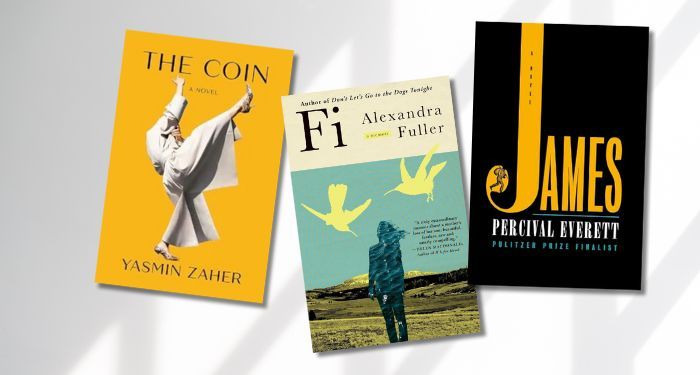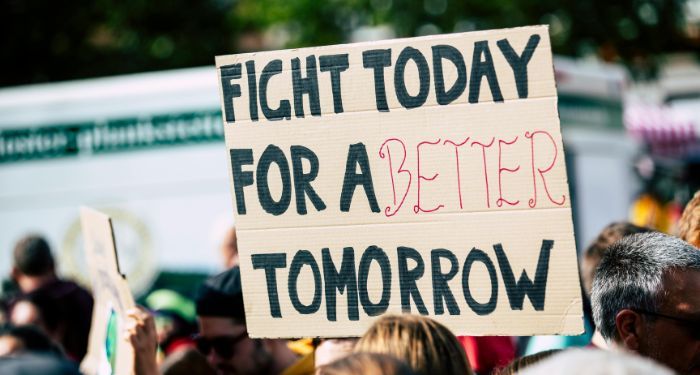By Sophie van Well Groeneveld.

Annie Ernaux & Marc Marie, tr. Alison L. Strayer, The Use of Photography (2005; Seven Stories Press / Fizcarraldo Editions, 2024)
Annie Ernaux’s The Use of Photography (first published in France in 2005 and now translated into English), is her first foray into directly incorporating photography into a work. Ernaux’s prose has often recalled images; writer and editor, Lou Stoppard curated an exhibition this year pairing images alongside vignettes from Annie Ernaux’s Exteriors. In the corresponding book, she wrote of “Ernaux’s intriguing goal to write as if making photographs.” Ernaux begins The Years with a series of scenes that read as stills. As the title suggests, in The Use of Photography she is intrigued by what photos can provide in conveying a period of time.
Ernaux invites a collaborator into the exercise of writing in response to the fourteen photographs presented; journalist and author Marc Marie who she had an affair with after meeting in early 2003. The two met while Ernaux was undergoing treatment for breast cancer. The couple were drawn to the appearance of the spaces they cohabited, deciding to document this, and later using these scenes as a stimulus to recollect their relationship. The unintentional still-lifes can appear the opposite; garments sprawled as markers of people’s presence in a space, extensions of their bodies, removed from their bodies — clothes, shoes, underwear — leaving an imprint on living spaces. The clothes are often strewn across a room as pre-coital debris.
The photos don’t necessarily bear any correlation to reality. In ‘The Shoe in the Living Room’, the toe of Marie’s heavy soiled combat boot stamps on top of a lace bra. It suggests a violent male dominance, “In reality my relationship with M. in no way corresponds to this scene that is staged by the objects themselves.” Instead these photos serve as a prod into conjuring up memories. Of this set up for a text, Ernaux writes, “I don’t expect life to bring me subjects but unknown structures for writing.”
 ‘The kitchen in the morning’: an image from The Use of Photography. Photograph: Annie Ernaux & Marc Marie
‘The kitchen in the morning’: an image from The Use of Photography. Photograph: Annie Ernaux & Marc Marie
Marie and Ernaux’s still life photographs of underlit rooms with themselves absent, illuminates their time spent largely indoors. Partly this is the privacy required of having an affair, but primarily it is the demand that comes with Ernaux undergoing chemotherapy and needing to heal, “The big holiday from life. The great cancer holiday.” She writes of foregoing the usual duties to respond to anything, a period of “the disappearance of meaning in everything.” By bringing in a collaborator, Ernaux has another witness beyond herself, for a text that is largely structured around her time undergoing cancer treatment. Not only does she see herself, but is reminded of Marie seeing her; “It was in the bathroom of this room that I showed myself to him with my bald head for the first time. We’d been together for seven weeks. He told me that it suited me. He noticed that my hair was starting to grow back, the faintest white and black baby-chick fuzz. I had not noticed it yet.”
While Ernaux has a pertinent reason to be shut off from the world, this is not new territory in the personal life Ernaux excavates in her books. The presence of Marc Marie’s contributions in The Use of Photography, sheds light on a separation that exists amongst Ernaux’s texts. While both write of their stay at the Hotel Amigo in Brussels, and a trip to Venice, Ernaux only writes the two indoors, away from gazes. In one entry, Marc Marie recalls the two walking down the street and it feels odd, and sticks out. Like the reader has been let into something we shouldn’t be. This is partly to disclose Marie’s insecurity, “A. is tall. For months, I didn’t want her to see me in flat shoes. When I was on the street with her, I always tried to walk on the high side of the pavement so that I could put my hand on her shoulder in a protective, dominant, eminently, obviously masculine posture.” But this entry feels a departure from Ernaux’s world, a rare seeping in of private life into public space.
 11. Mika Ninagawa, ‘TOKYO, 2019, Inkjet pigment prints,’ from
11. Mika Ninagawa, ‘TOKYO, 2019, Inkjet pigment prints,’ fromExteriors: Annie Ernaux and Photography (MACK and MEP,
2024). Courtesy of the artist, Tomio Koyama Gallery, MACK and
MEP.
In February of this year, Lou Stoppard curated an exhibition at Maison Européenne de la Photographie (MEP), presenting photographs from the MEP archives side-by-side with passages from Annie Ernaux’s Exteriors, also shown in the accompanying book, Exteriors: Annie Ernaux and Photography. Exteriors and The Use of Photography are very different books in their subjects. In the former, Ernaux writes vignette observations of strangers on the RER train, at the butchers, and feeling overwhelmed when entering the hypermarket in the new town of Cergy. For the exhibition, Stoppard picked out segments of about a third of the original Exteriors.
These photos span decades, geographies and spaces. They show people food shopping, pushed against each other on public transport, captured alone in their errands or pondering; staircases, building complexes and plazas. The effect of positioning these alongside Ernaux’s prose, invites further imagining of passerbys’ lives beyond the brief glimpses of Ernaux’s observations — it enlarges the stories on the page. Much like in The Use of Photography, although more transparently, these photos bear no resemblance to the corresponding passages. Instead, just by virtue of being placed next to text, they expand the world of these scenes, creating an outline that can be placed onto different localities and characters.
 Ursula Schulz-Dornburg, ‘Ploshchad Vosstaniya – Uprising
Ursula Schulz-Dornburg, ‘Ploshchad Vosstaniya – UprisingSquare, 2005, Photogravure, MEP Collection, Paris, Gift of the
artist in 2020,’ from Exteriors: Annie Ernaux and Photography
(MACK and MEP, 2024). Courtesy of the artist, MACK and MEP.
These two books cement a juxtaposition that has long been in Ernaux’s work: a line sketched between the inside and outside world. The close relations Ernaux knowingly writes of, are predominantly shown in private spaces that enable extended intimacy. The public and outside spaces are reserved for witnessing those she does not know. There are factors that demand this distinction such as affairs in both Simple Passion and The Use of Photography. In the latter, Ernaux writes, “A hotel room, with its double impermanence, temporal and spatial, is for me a place where the pain of love is felt most acutely. At the same time, I’ve always had the impression that making love in a hotel is without consequence because there, in a sense, you are nobody.”
 Hiro, ‘Shinjuku Station, Tokyo, 1962, Gelatin silverprints, MEP
Hiro, ‘Shinjuku Station, Tokyo, 1962, Gelatin silverprints, MEPCollection, Paris, Gift of the Elsa Peretti Foundation in 2008,’
from Exteriors: Annie Ernaux and Photography (MACK and MEP,
2024). Courtesy of The Estate of Y. Hiro Wakabayashi, MACK and
MEP.
The private spaces, away from other people’s gazes, opens up the possibility of being a new person. And yet, of the other private space she spends a lot of time in, she says, “houses retain the memory of everything that has happened inside them. Why wouldn’t they? According to an article in Le Monde, geneticists have confirmed that a woman’s womb retains an imprint of all the children, whether born or aborted, that have developed there.” The house is her place to stake claim to her intimate relations, her past shames, desires and relationships. To be reminded of them and not forget.
Ernaux contaminates the homespace with the outside world when she reflects on the politics happening in the distance. When responding to one photo, Ernaux writes, “One morning, I turned on the radio, and there it was: a distant horror that I could only feel through my love affair with M.” Here, referring to the Iraq war, which she returns to often in The Use of Photography. The war is both literally distant, and far from her primary concern of surviving cancer: “Cergy, its kitchen, its overheated rooms and isolation, a micro-universe that kept me removed both from a current event perceived as minor — the war in Iraq — and the final spasms of the life I’d just left.”
 Dolorès Marat, ‘La femme aux Gants (Woman with gloves),
Dolorès Marat, ‘La femme aux Gants (Woman with gloves),1987, Fresson four-colour pigment print, MEP Collection,
Paris. Acquired in 2006,’ from Exteriors: Annie Ernaux and
Photography (MACK and MEP, 2024). Courtesy of the artist,
MACK and MEP.
Politics and what is going on outside, is an afterword, as it can often be, remembered later: “It is already very hot, the summer to follow will be that of the “great heatwave” and when it’s over thousands of old people will have died and been buried, even on Sundays, but for the time being, it was simply the most magnificent summer we had seen for a long time.” While having an insular existence in this period of 2003; when Ernaux returns to it in writing, she invites the outside in. At the end of Simple Passion, Ernaux similarly departs from the passionate love affair, to mention the first war on Iraq in 1991: “I could end the book here and pretend that nothing that goes on in the world or in my life could affect this text.” While Ernaux’s deeply revealing relations in private spaces distance her from the world, she seeks to reframe these in the larger context of politics, climate, wars, to not disassociate the personal and political in the act of writing, even if they were experienced otherwise.
Annie Ernaux writes early on in The Use of Photography that words give her a more real sense of time than images do (such as focusing on the headlines of a newspaper that might be seen within a photograph). In this book, the presence of images provides material to write against, dispute, and reinterpret; to invite the opportunity to write a different truth. To bring the outside world in and enlarge the stories beyond the distance emanated in the photographs.

ABOUT THE REVIEWER
Sophie van Well Groeneveld is a writer from London, based in New York. Her writing has most recently appeared in The Guardian, The Brooklyn Rail, and The Rumpus. Sophie is an MFA candidate in Creative Nonfiction at NYU.











 Bengali (Bangladesh) ·
Bengali (Bangladesh) ·  English (United States) ·
English (United States) ·